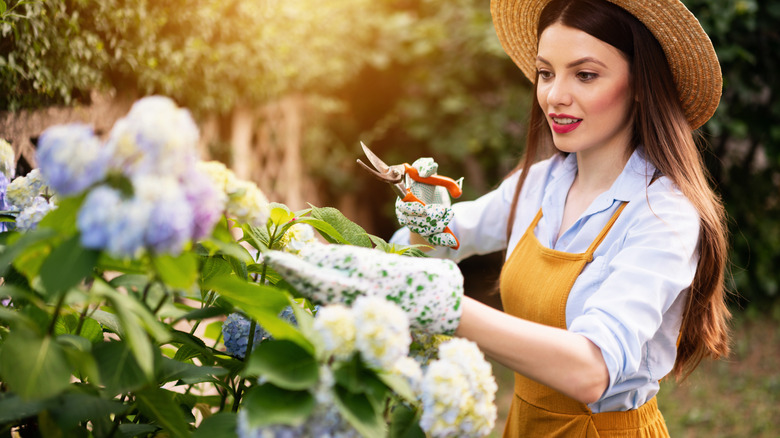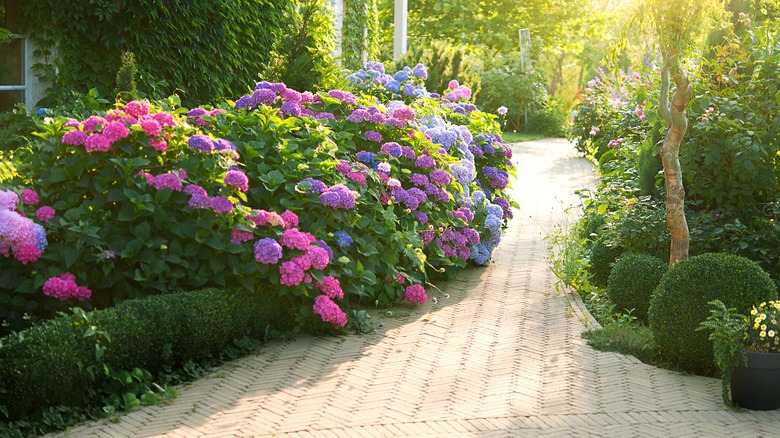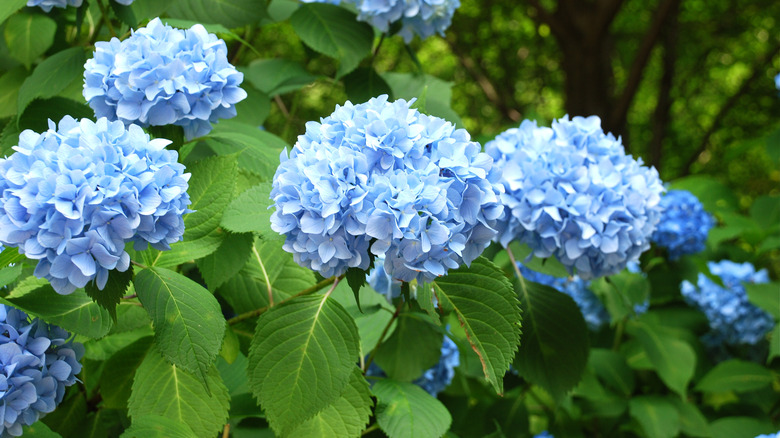This Is The Optimal Spot In Your Garden To Plant Hydrangeas
Hydrangeas are particularly beloved for their stunning blooms and versatility in garden design. They are hardy flowers so they thrive in a diverse range of conditions and climates. It's very likely that if you plant these perennials in your garden once, they'll never leave. This is why they are a go-to flower for many homeowners and gardeners who want their outdoor spaces to be graced with vibrant colors year after year. However, to ensure that your hydrangeas thrive and display their full splendor, selecting the perfect spot in your garden to grow them is crucial.
Typically, hydrangeas prefer moist, free-draining soil and dappled shade. While these flowers are generally adaptable, there are many different types of hydrangeas, and each has their own unique requirements for optimal growth. Read on to discover the ideal conditions for growing hydrangeas, ensuring they remain glorious additions to your garden landscape for years to come.
Hydrangeas prefer a balance of sunlight and shade
Hydrangeas thrive with the right balance of light. They generally prefer areas that are neither too sunny nor too shady, with morning sun and afternoon shade being ideal. But, the amount of sunlight hydrangeas can handle depends on your location. If you live in northern areas, they can tolerate sunlight for longer because the intensity of sunlight is lower in northern regions. This means they could even thrive under sunlight all day long. Meanwhile, if you live in more southern regions, they prefer just a few hours of morning sunlight and avoiding the harsh afternoon sun. This is why it is generally recommended to avoid planting hydrangeas in south-facing positions, because this can lead to excessive sun exposure and dryness.
Big leaf hydrangeas, including mopheads and lacecaps fit this bill perfectly. Panicle hydrangeas and smooth hydrangeas are more sun-tolerant but still benefit from some shade in the afternoon. Oakleaf hydrangeas are the most tolerant to long, sunny conditions but the further south you live, the better they'll fare with some afternoon shade. Be sure to keep in mind your hydrangea variety, the path of sunlight, and your garden's shade features when deciding where to plant your hydrangeas.
Hydrangeas need lots of space
Adequate space is essential for hydrangeas to grow. Check the fully matured size of the variety you are planting to ensure there is enough room for air circulation. Overcrowding, a gardening mistake many beginners make way too often, can lead to poor airflow and increased susceptibility to disease like fungi and other pathogens. Garden Design recommends providing at least three feet of space around each plant so choose a location in your garden that can allow for this. Avoid planting hydrangeas beneath trees, as root competition and lack of sunlight can prevent them from thriving.
Another important consideration for space allotment is soil drainage. Hydrangeas love moisture. Knowing this, some gardeners overwater them, which is a major watering mistake. To avoid this, plant hydrangeas in soil that is free-draining, or use pots that allow for easy drainage.
Though hydrangeas can survive in a variety of climates, their blooms are particularly vulnerable to wind damage. So, plant your hydrangeas in well-sheltered locations in your garden, such as near fences, walls, or among other shrubs, to protect their blooms from strong winds. Avoid planting them in exposed areas where strong winds could snap their stems. By providing the right balance of space and protection, your hydrangeas will thrive, adding vibrant colors and lush foliage to your garden.


